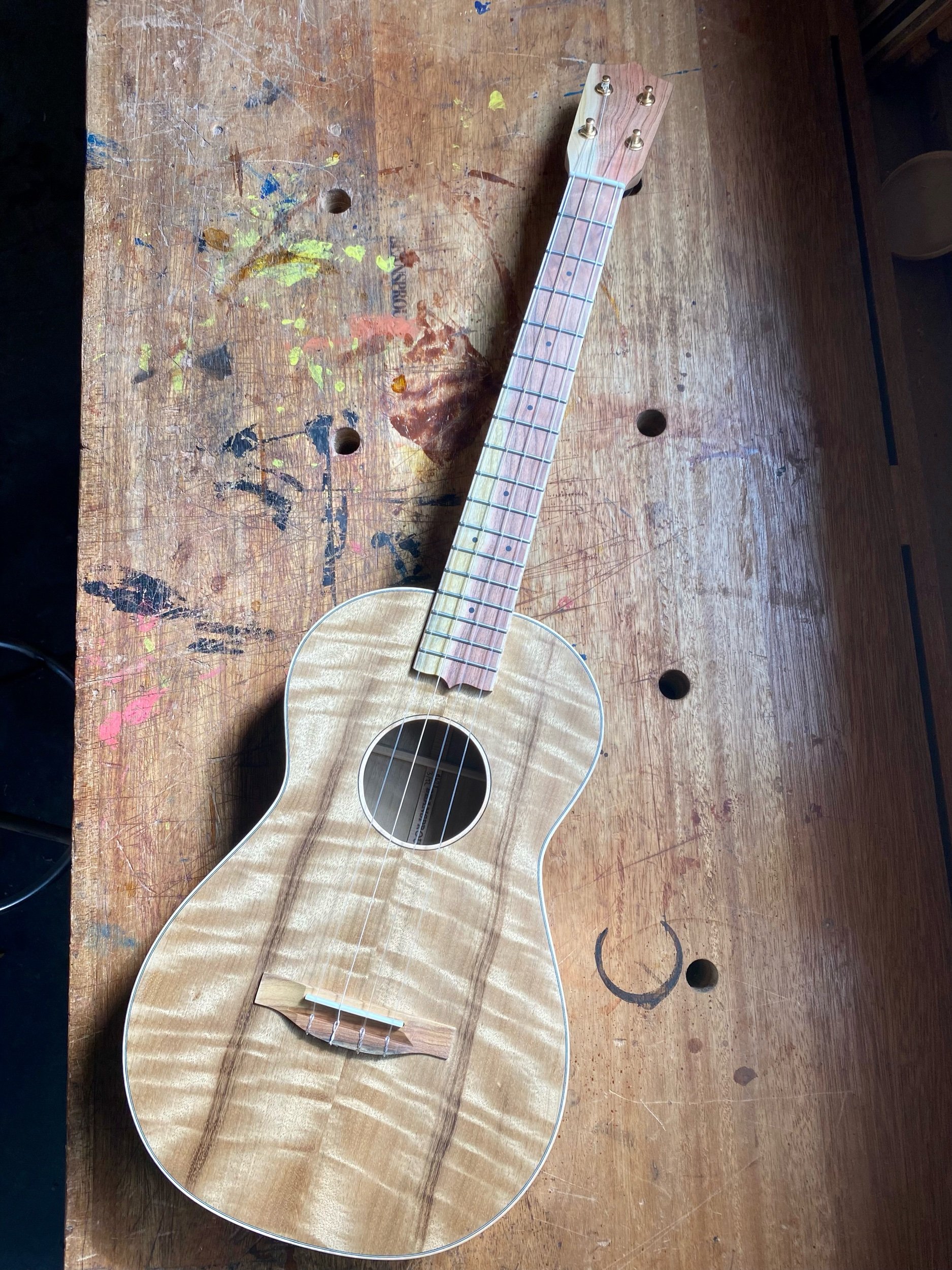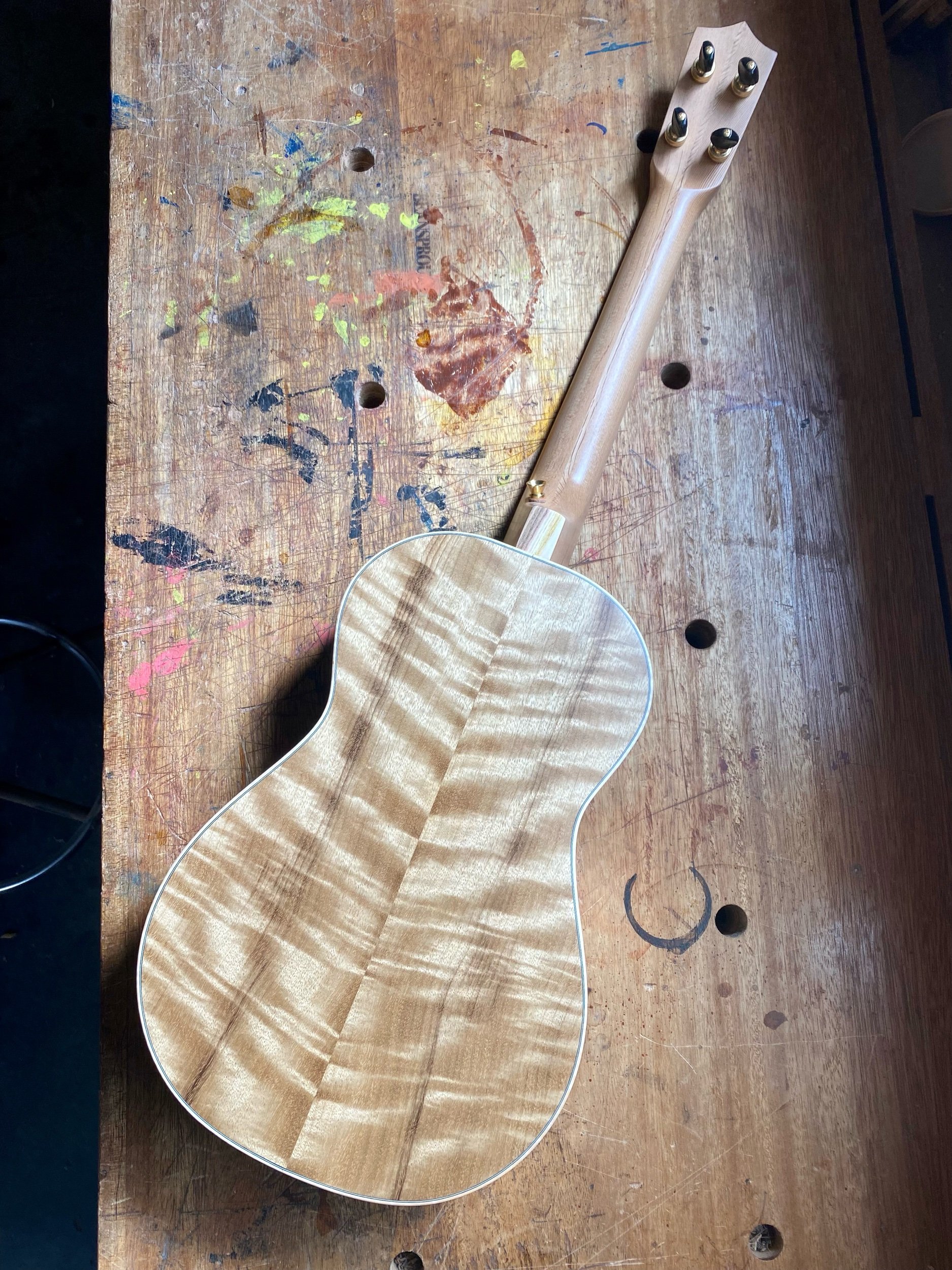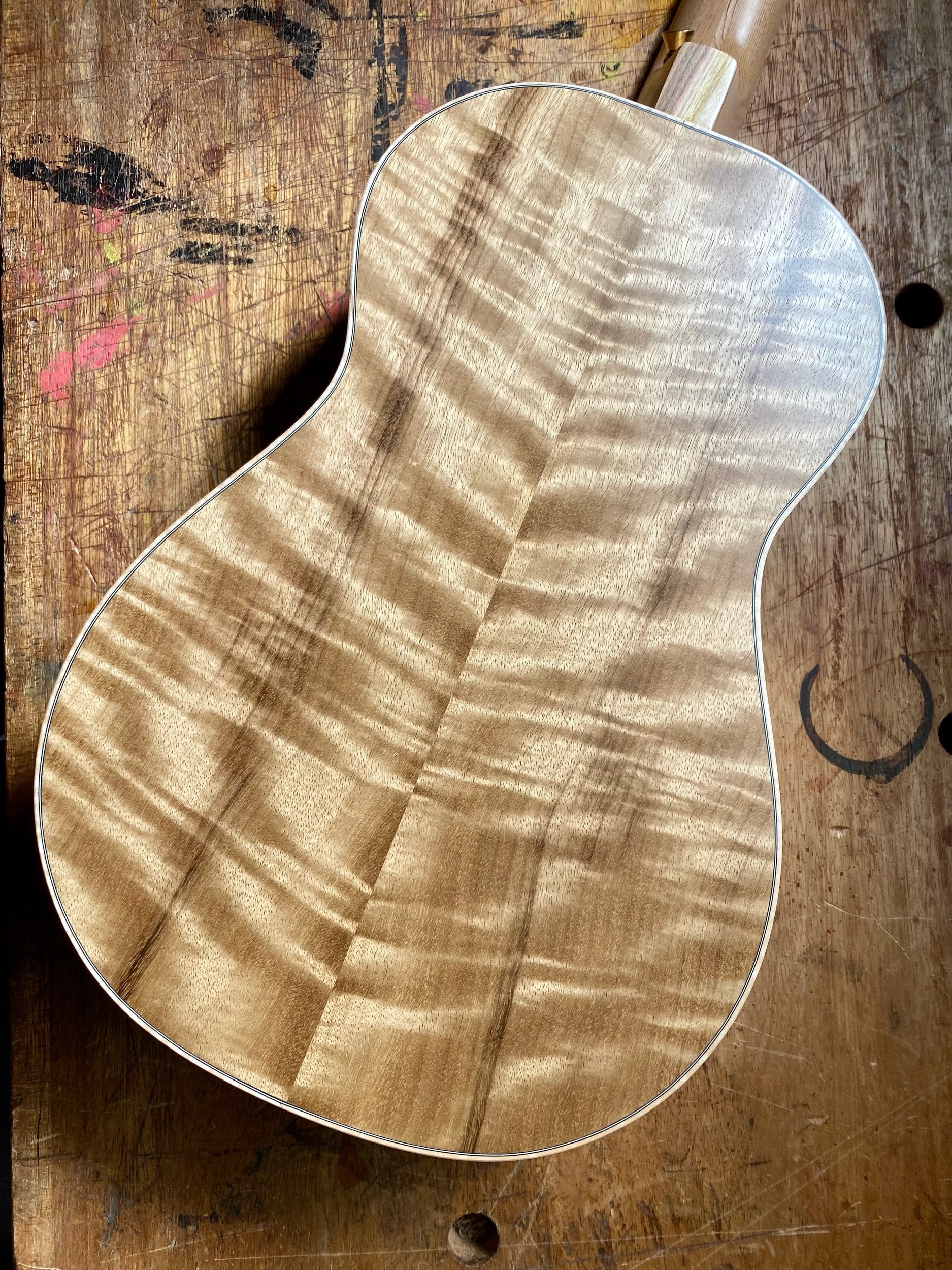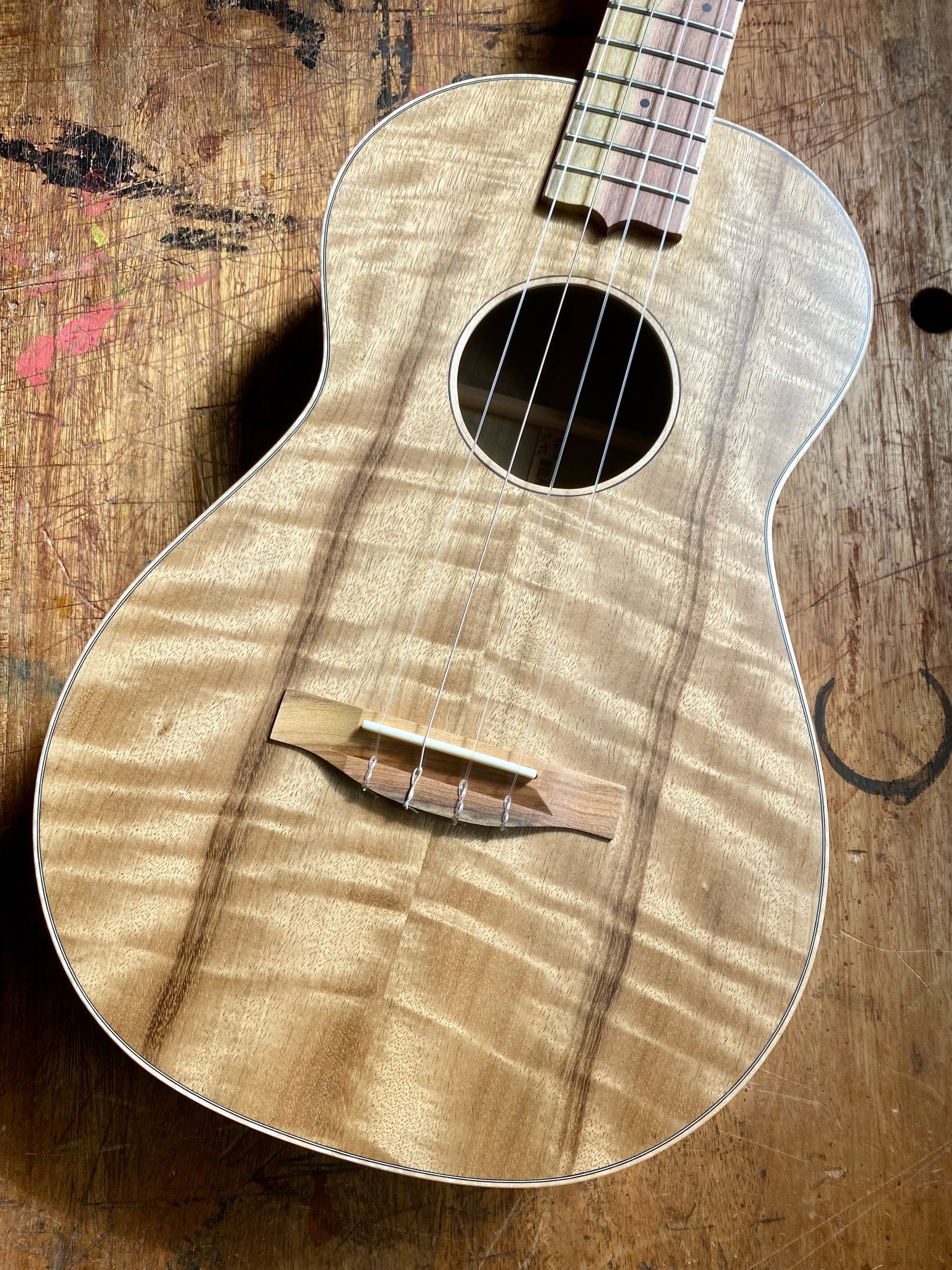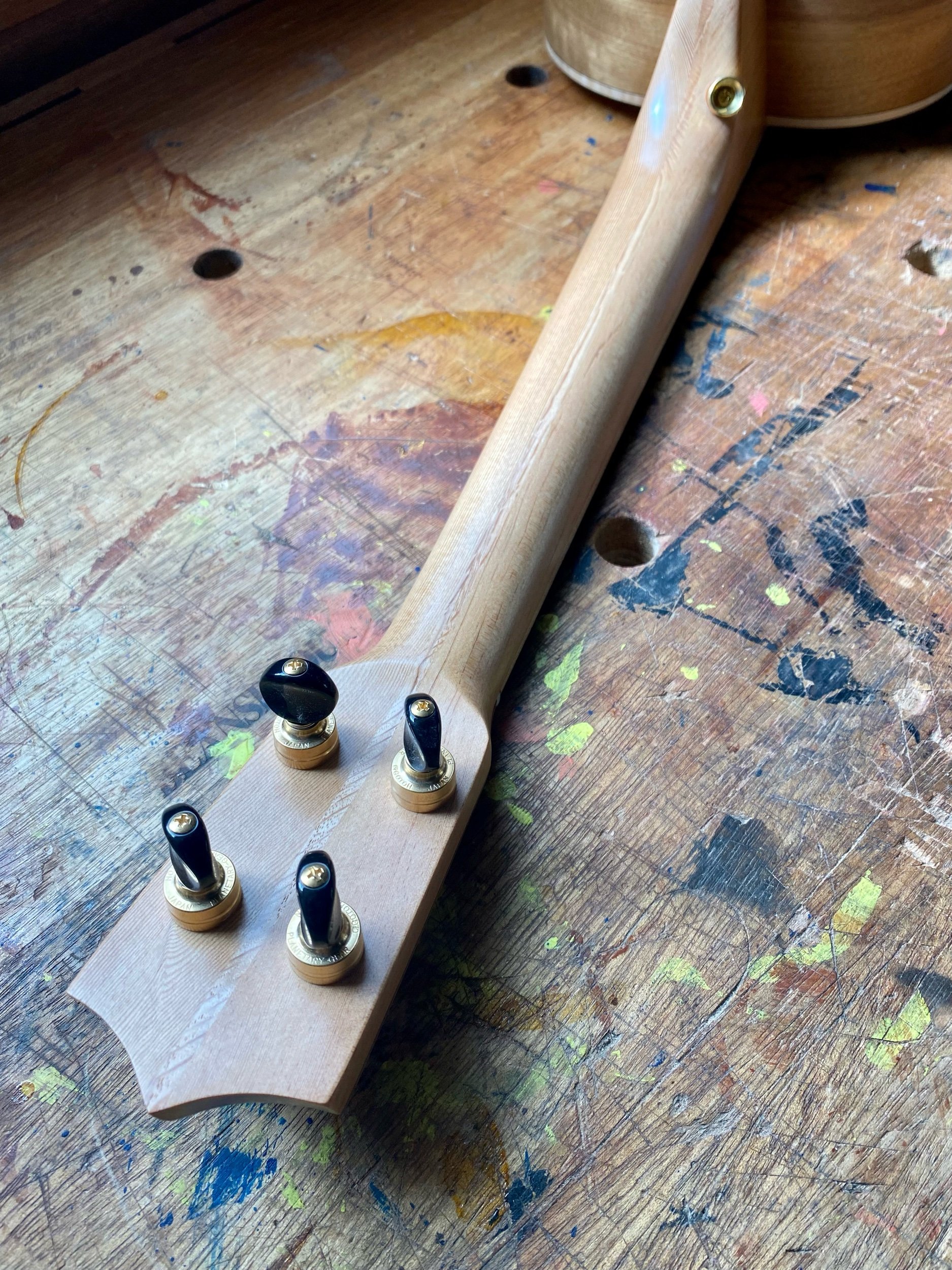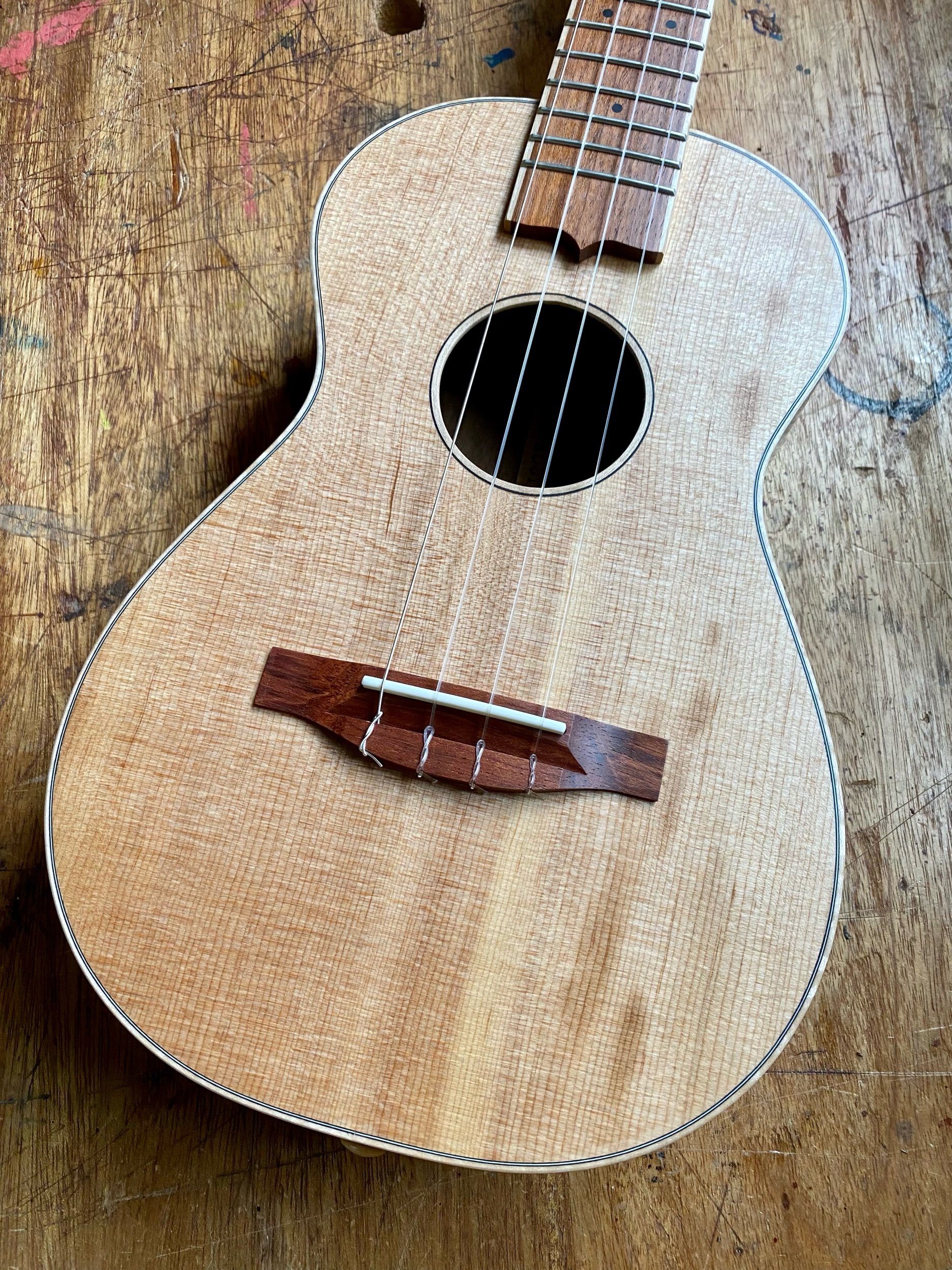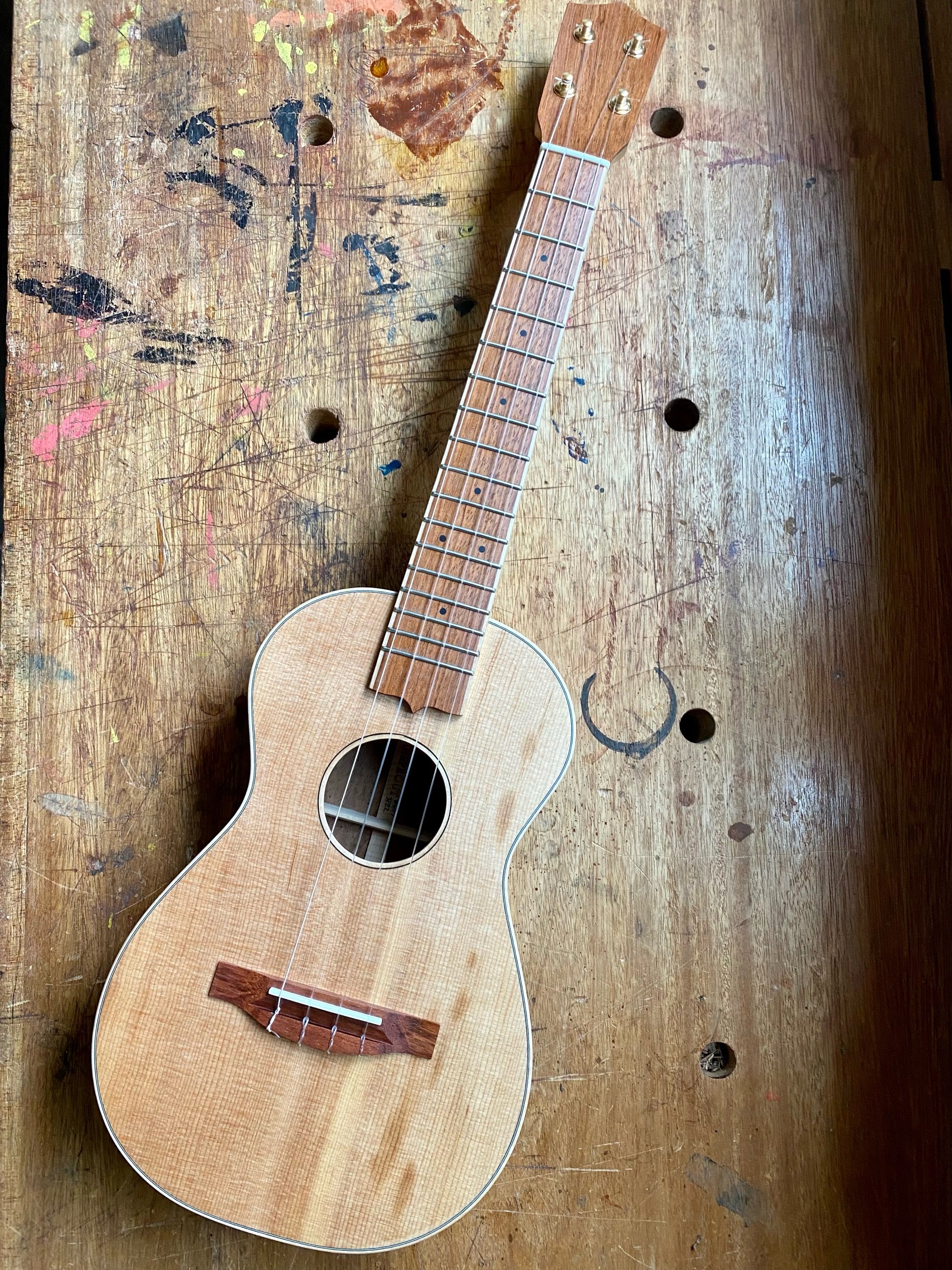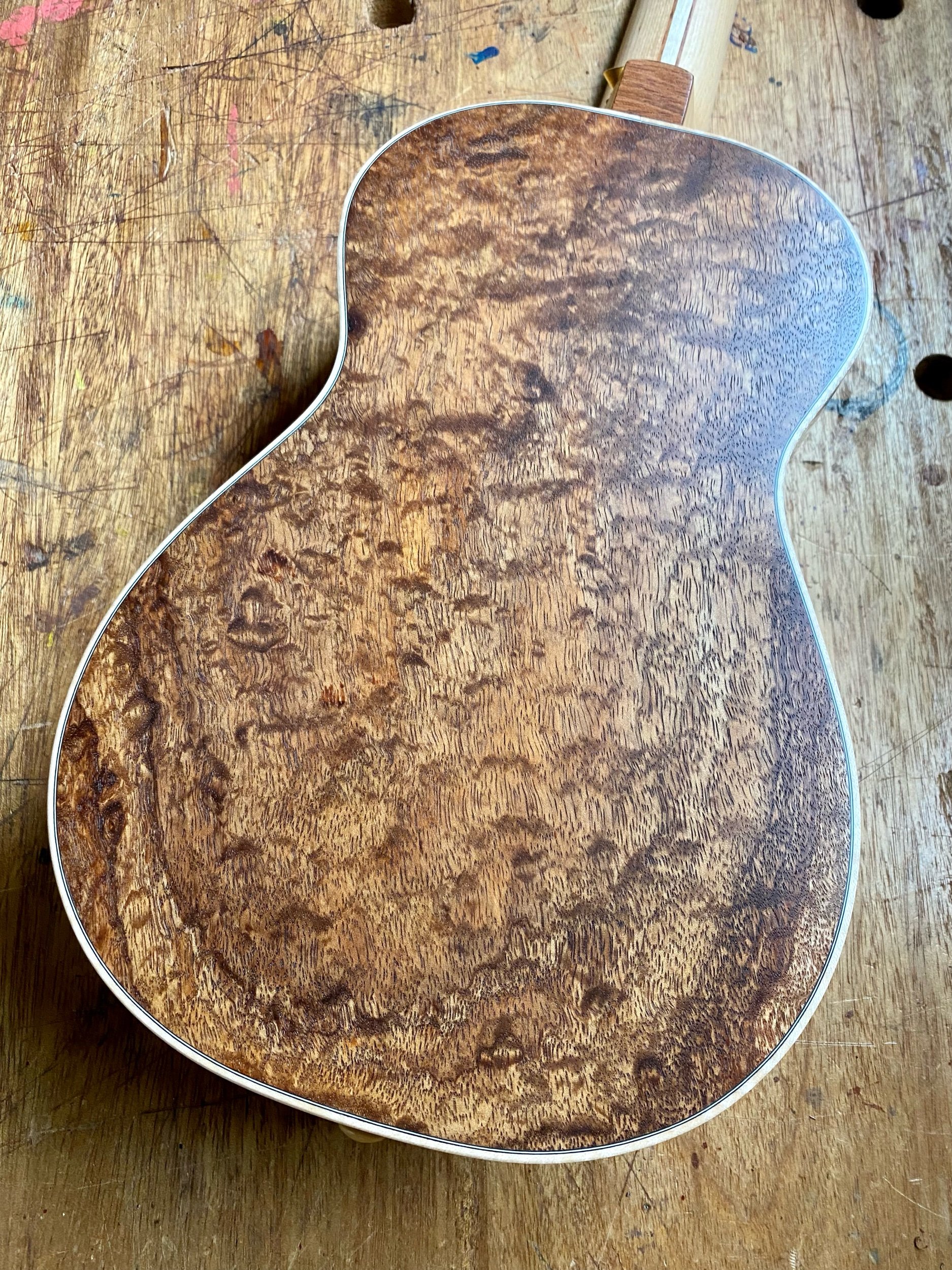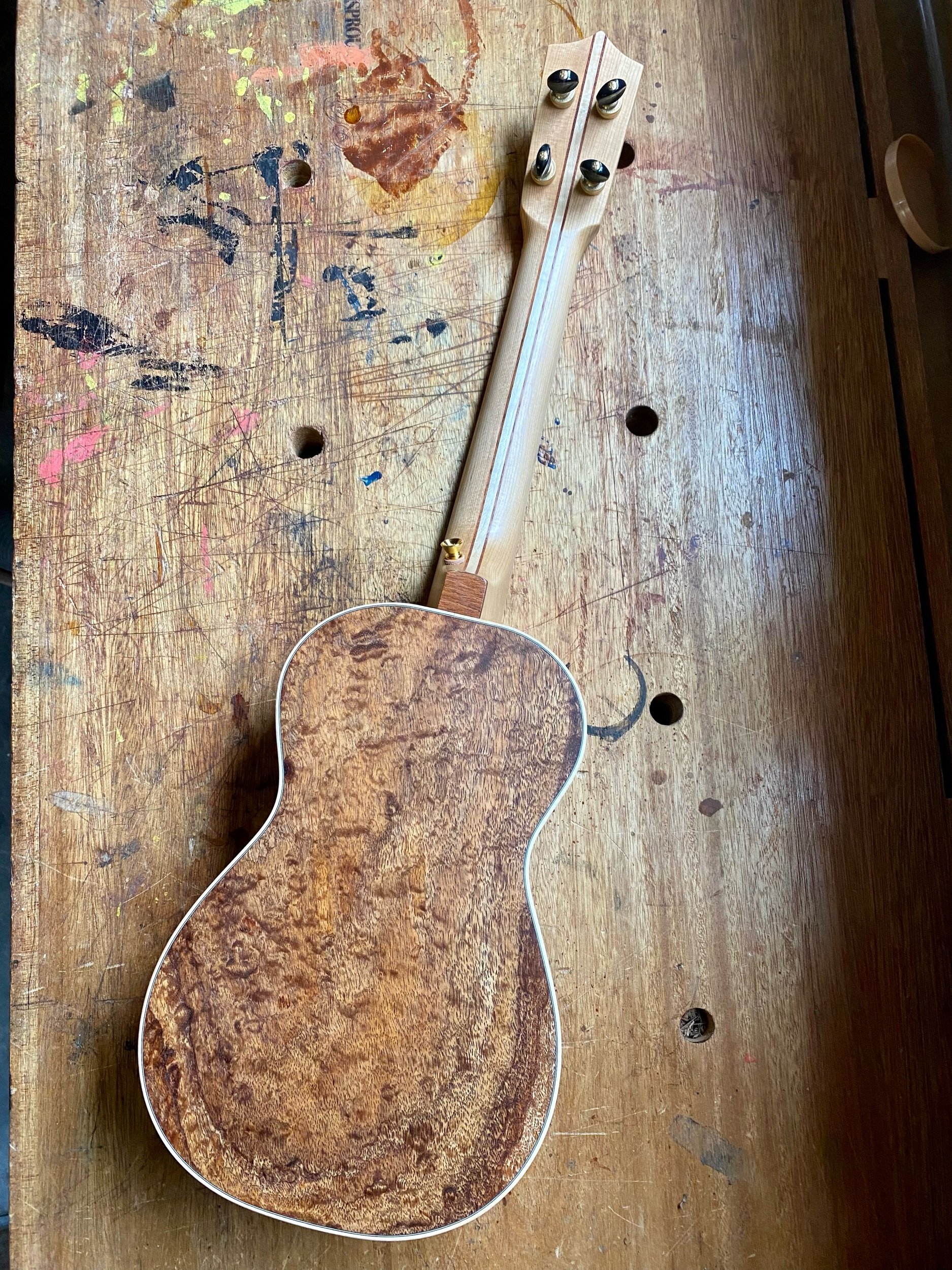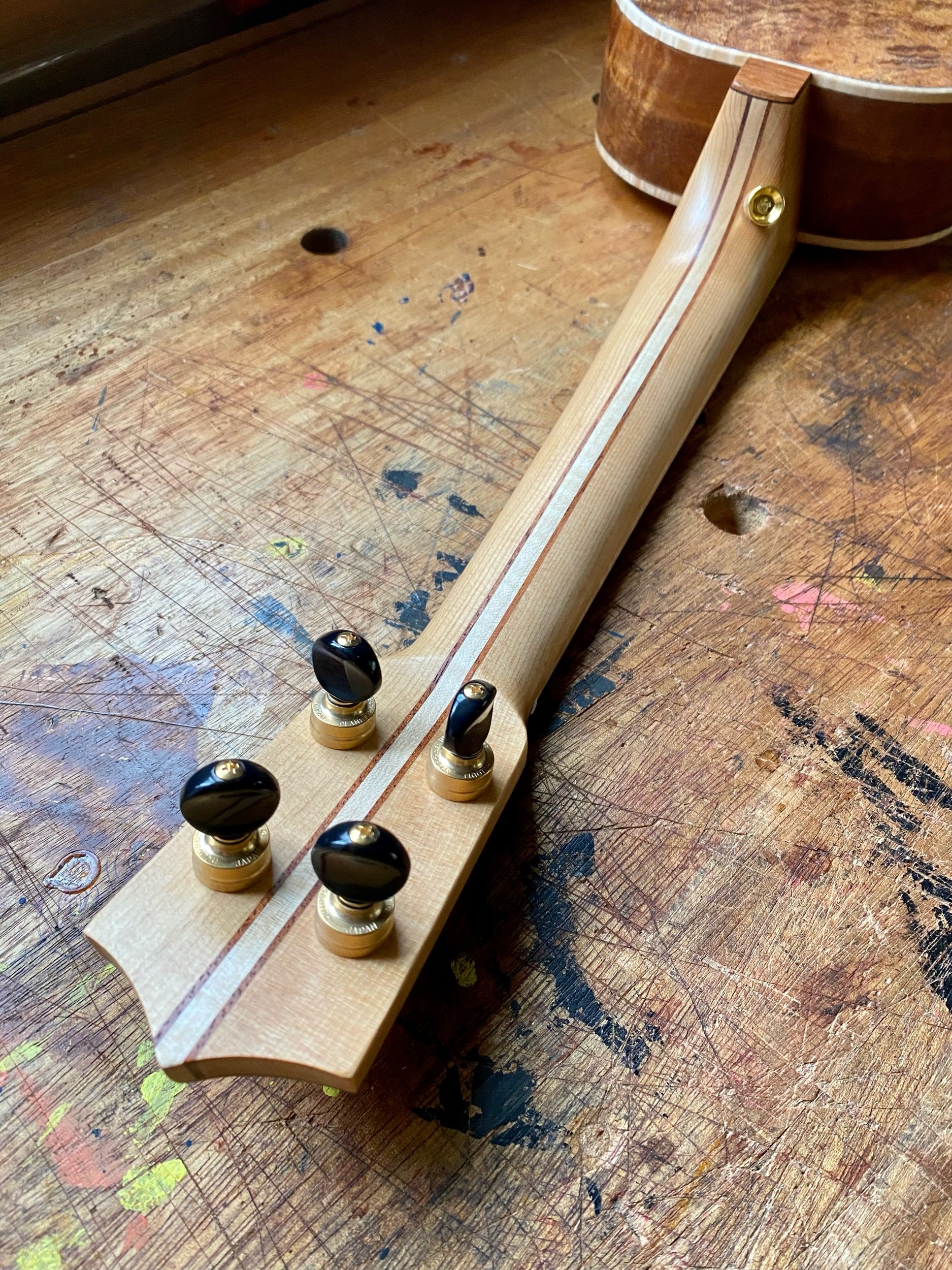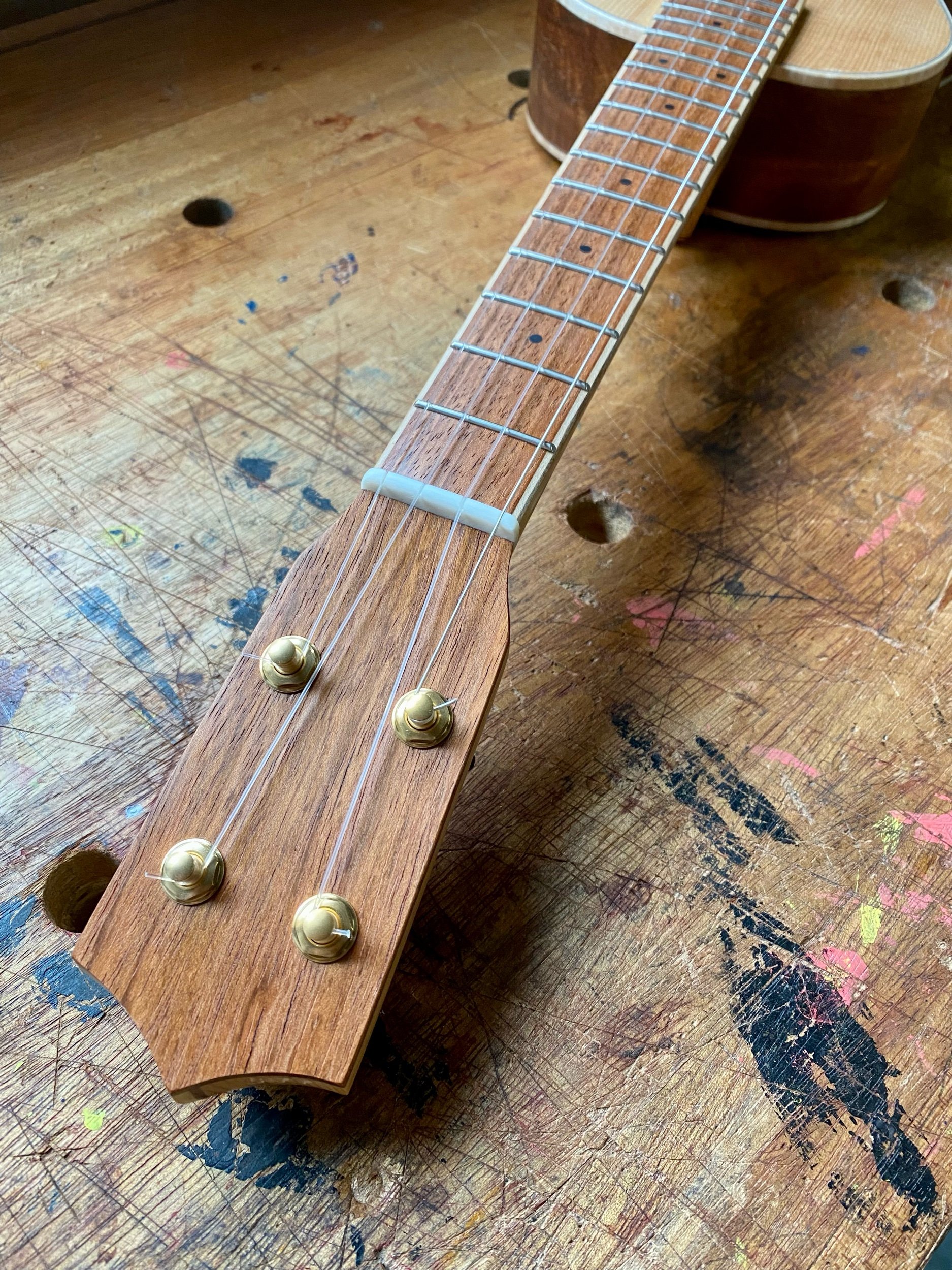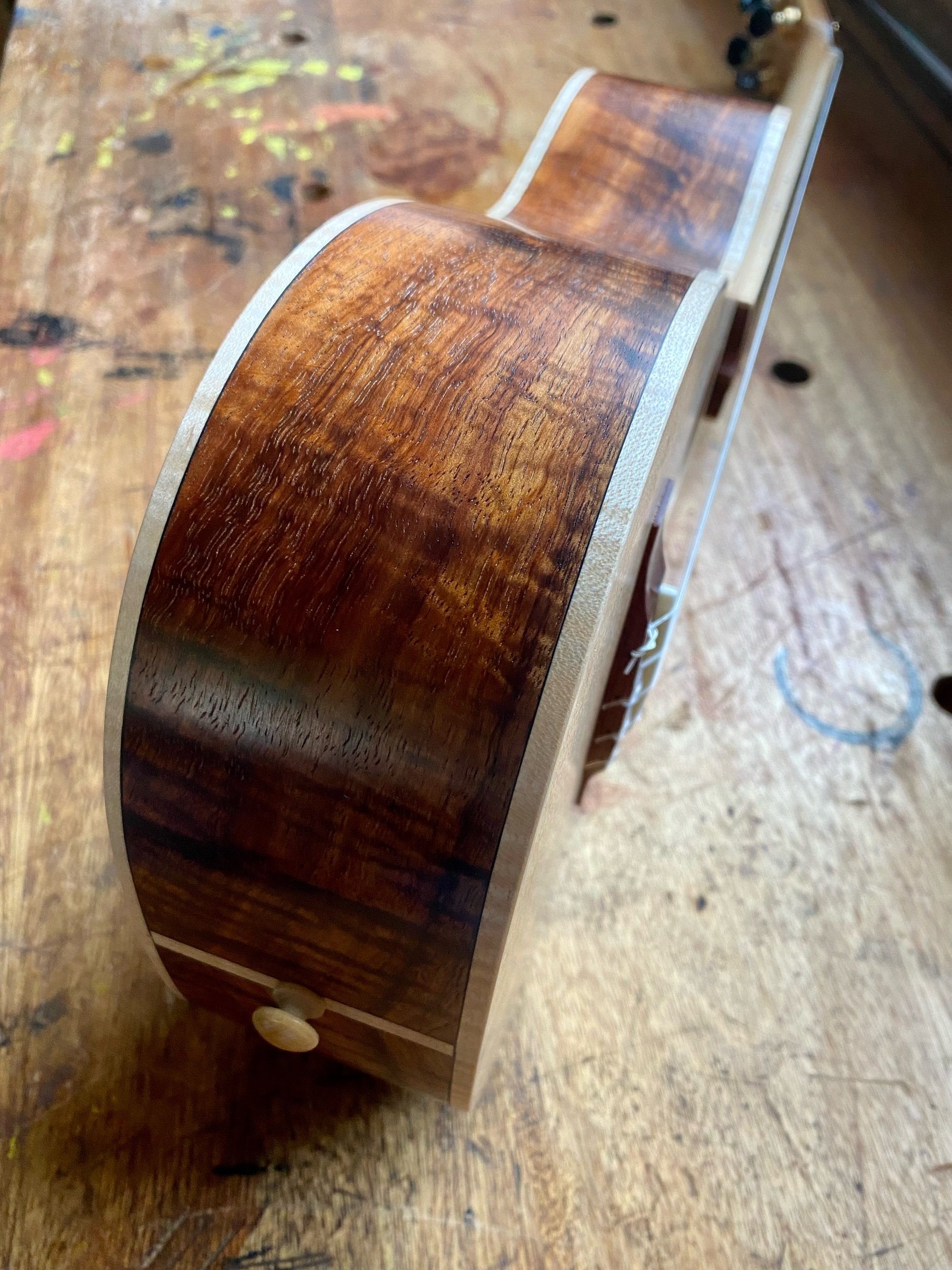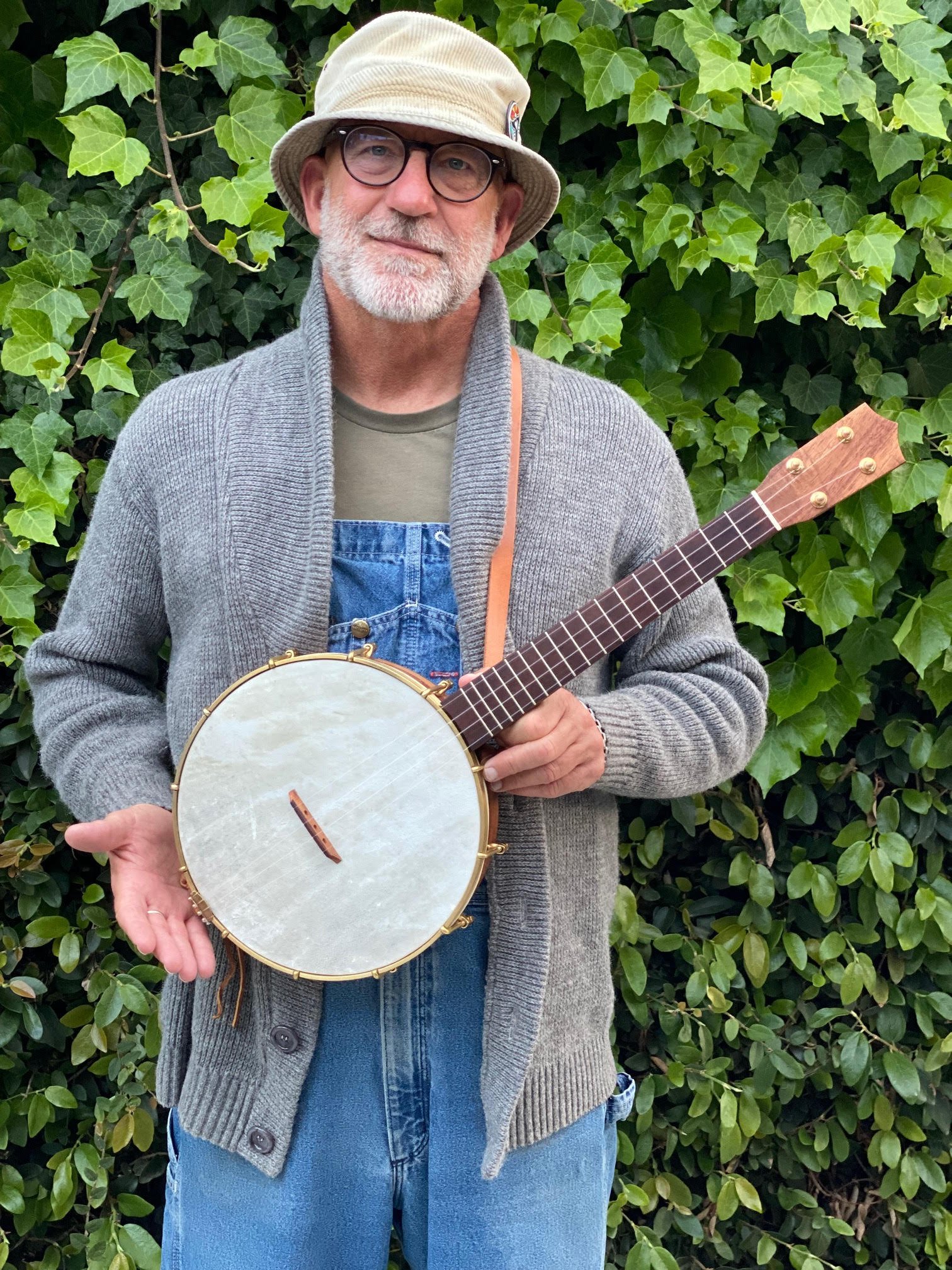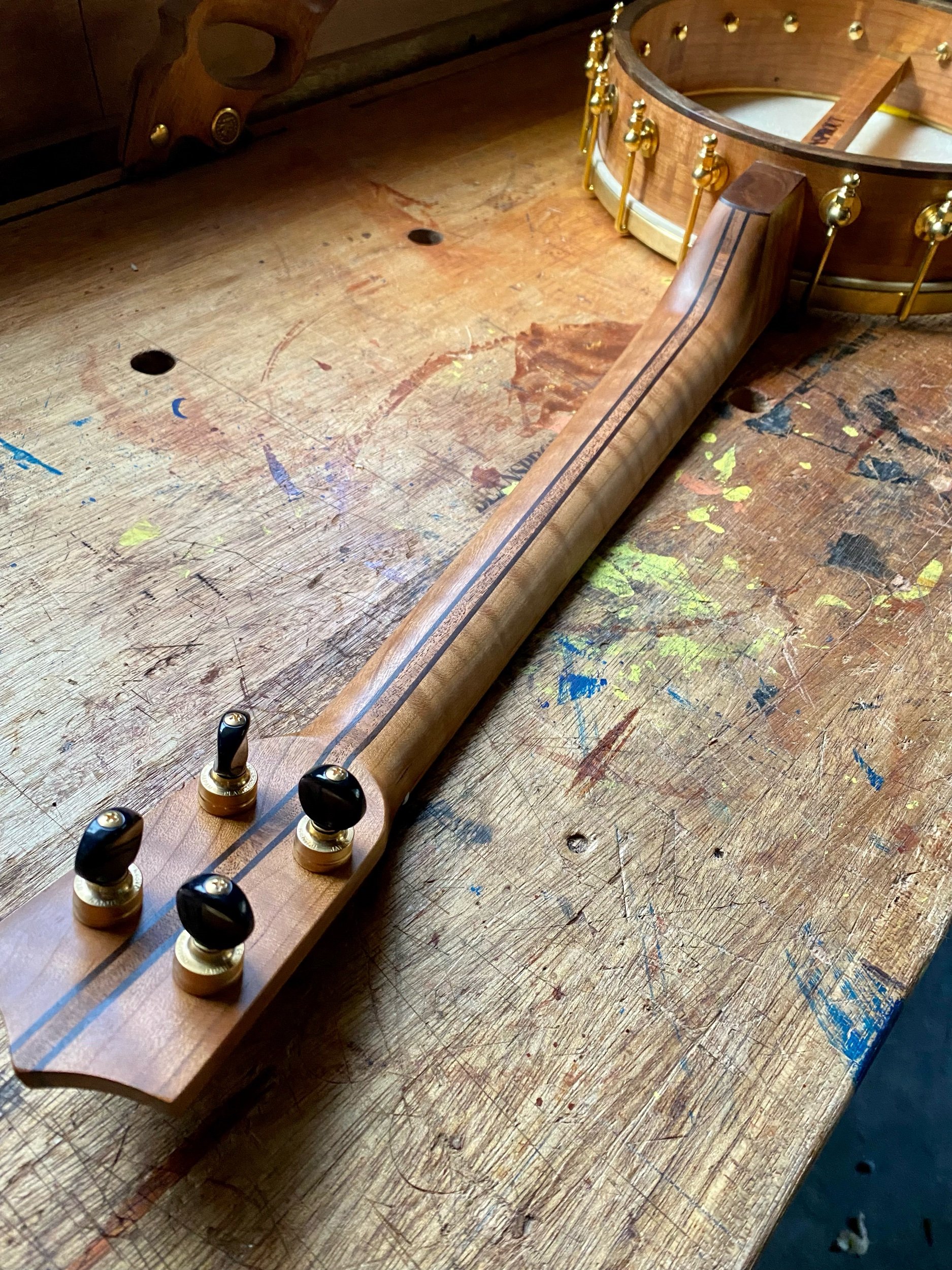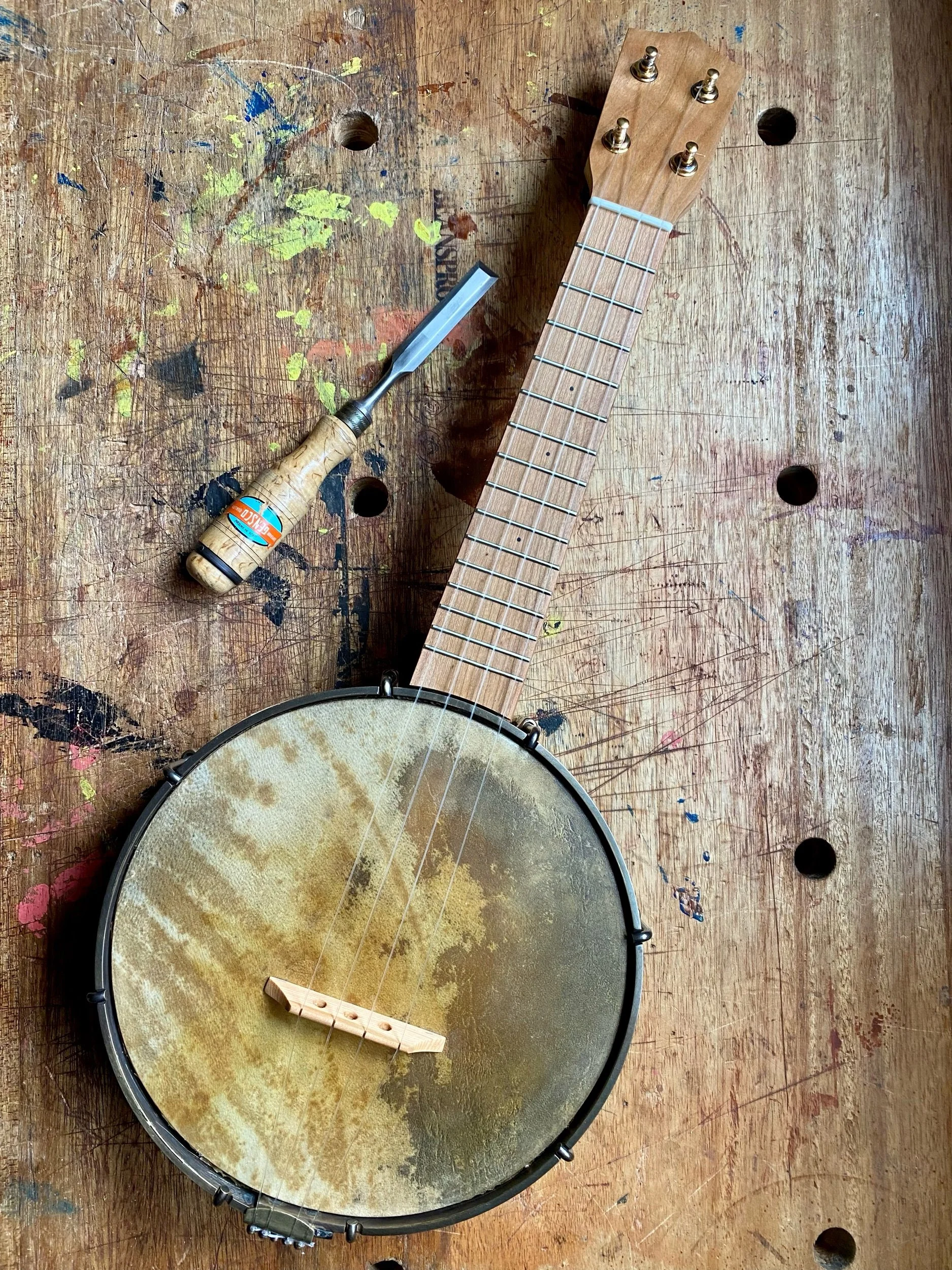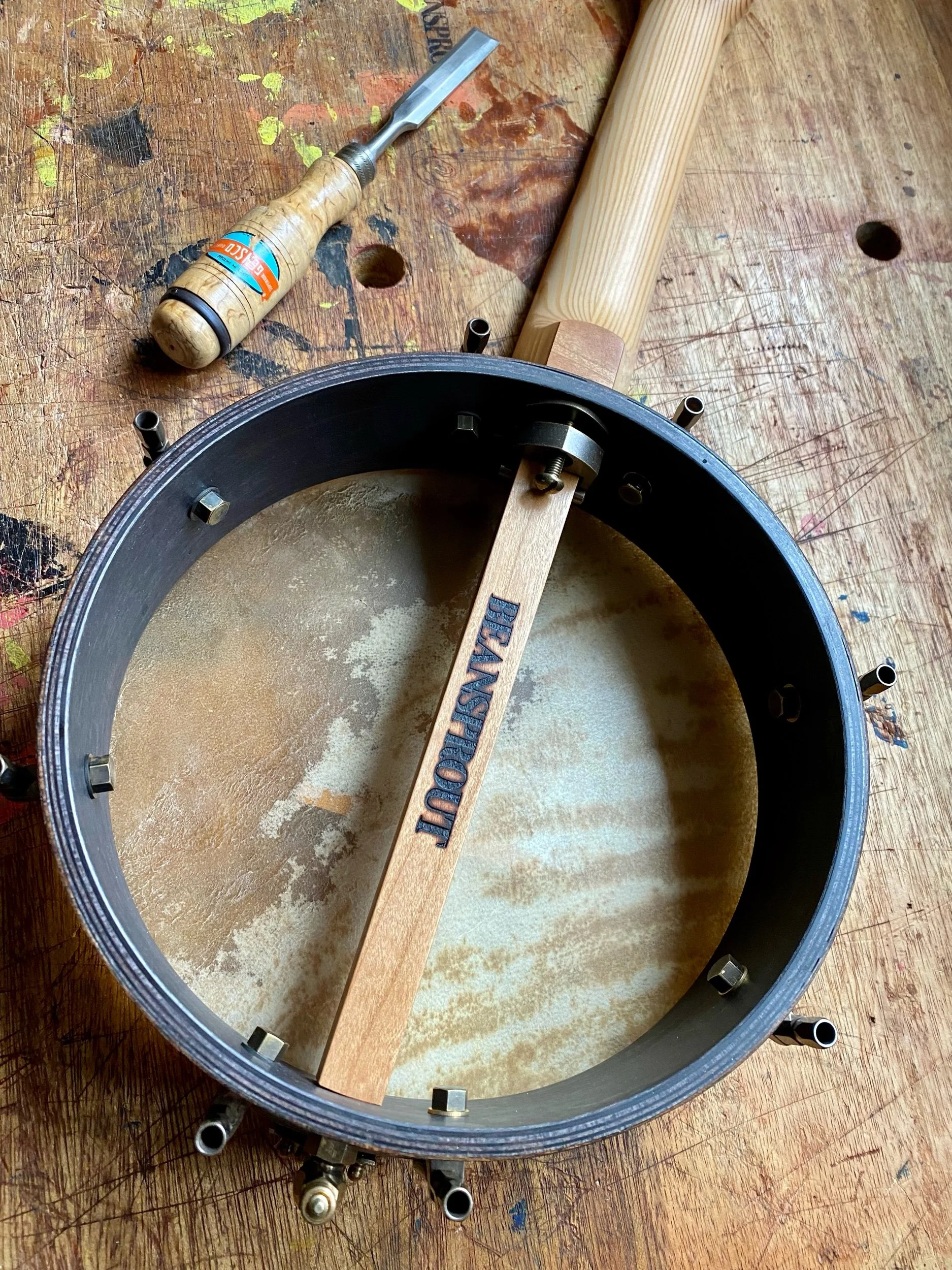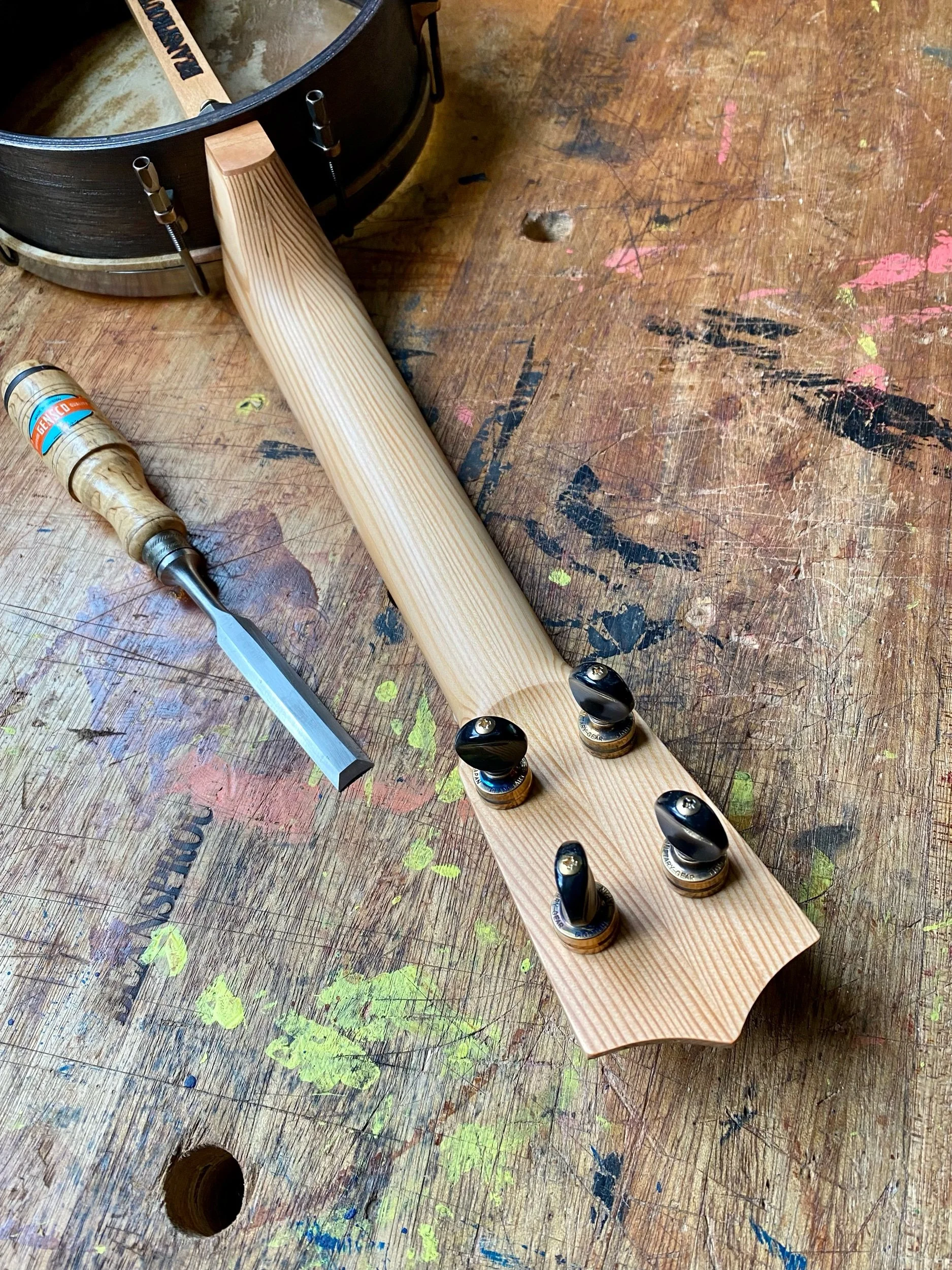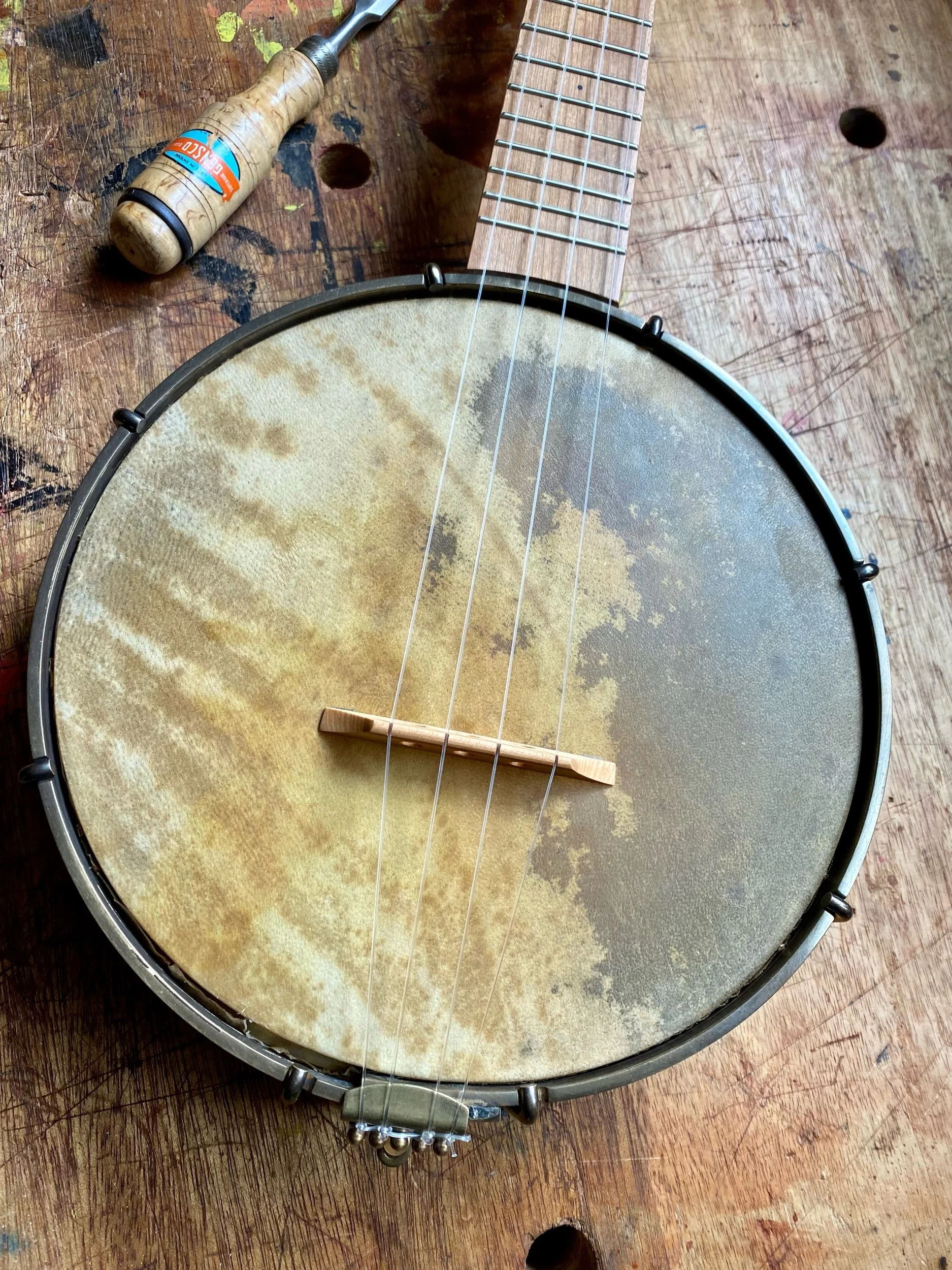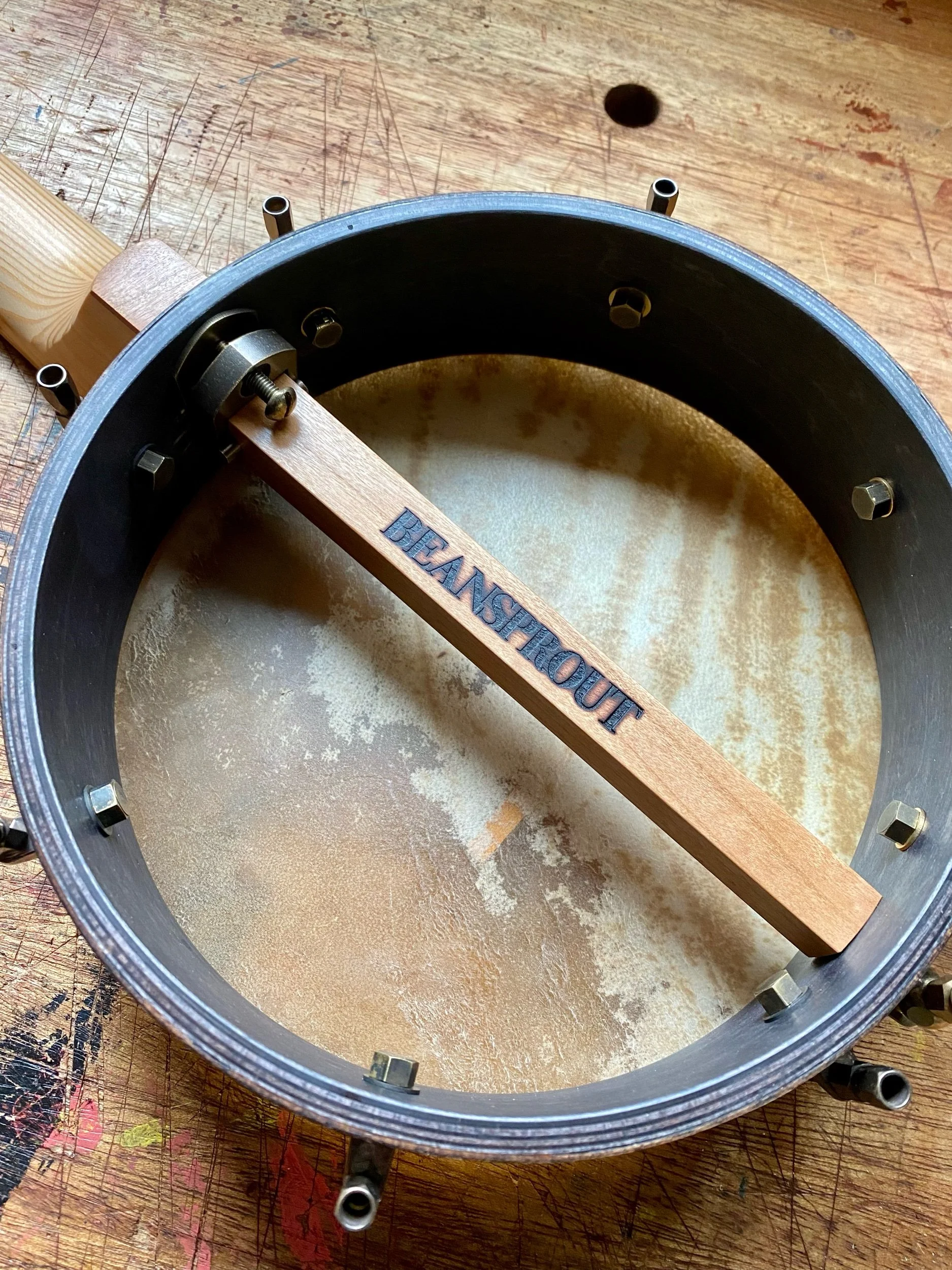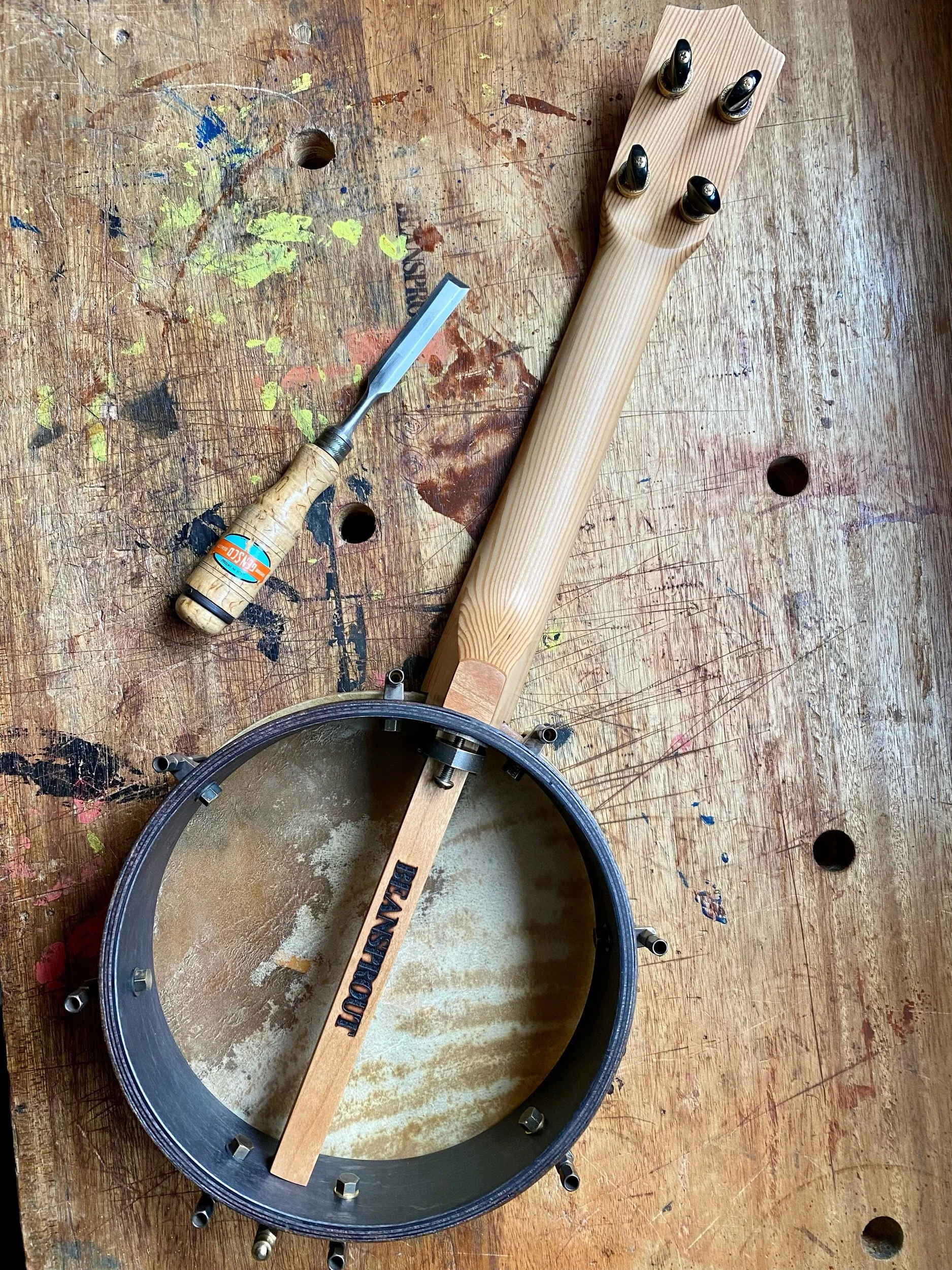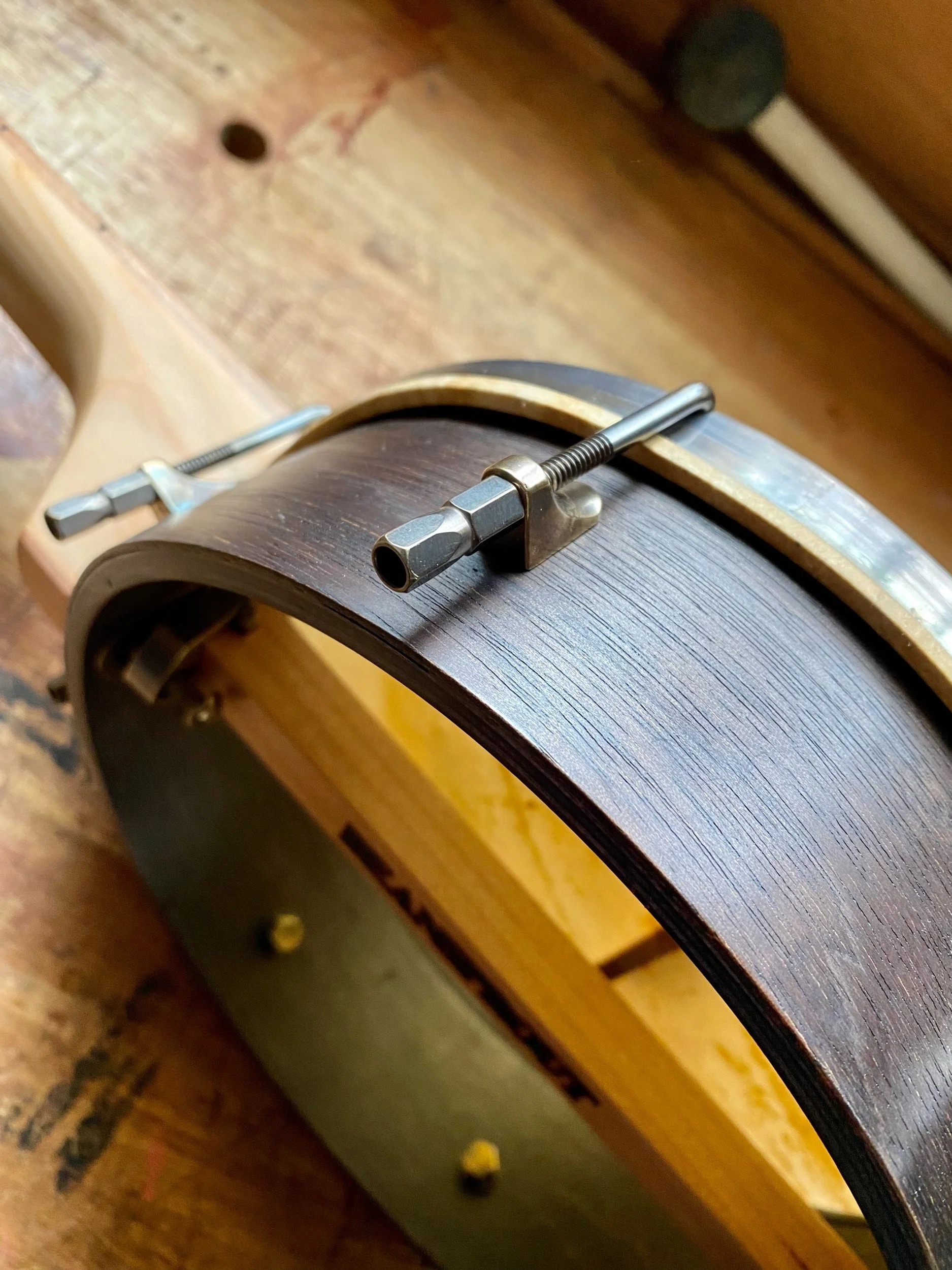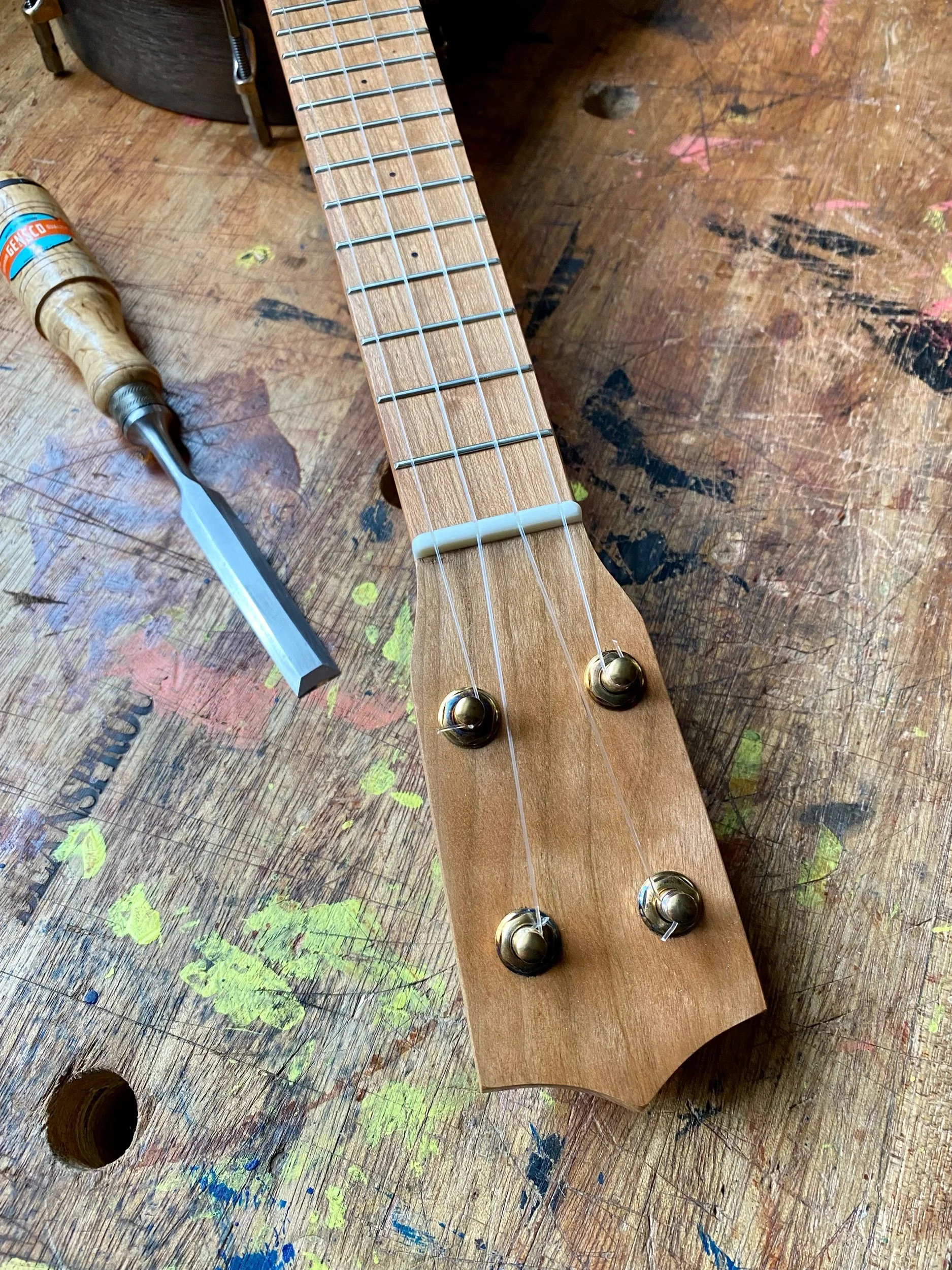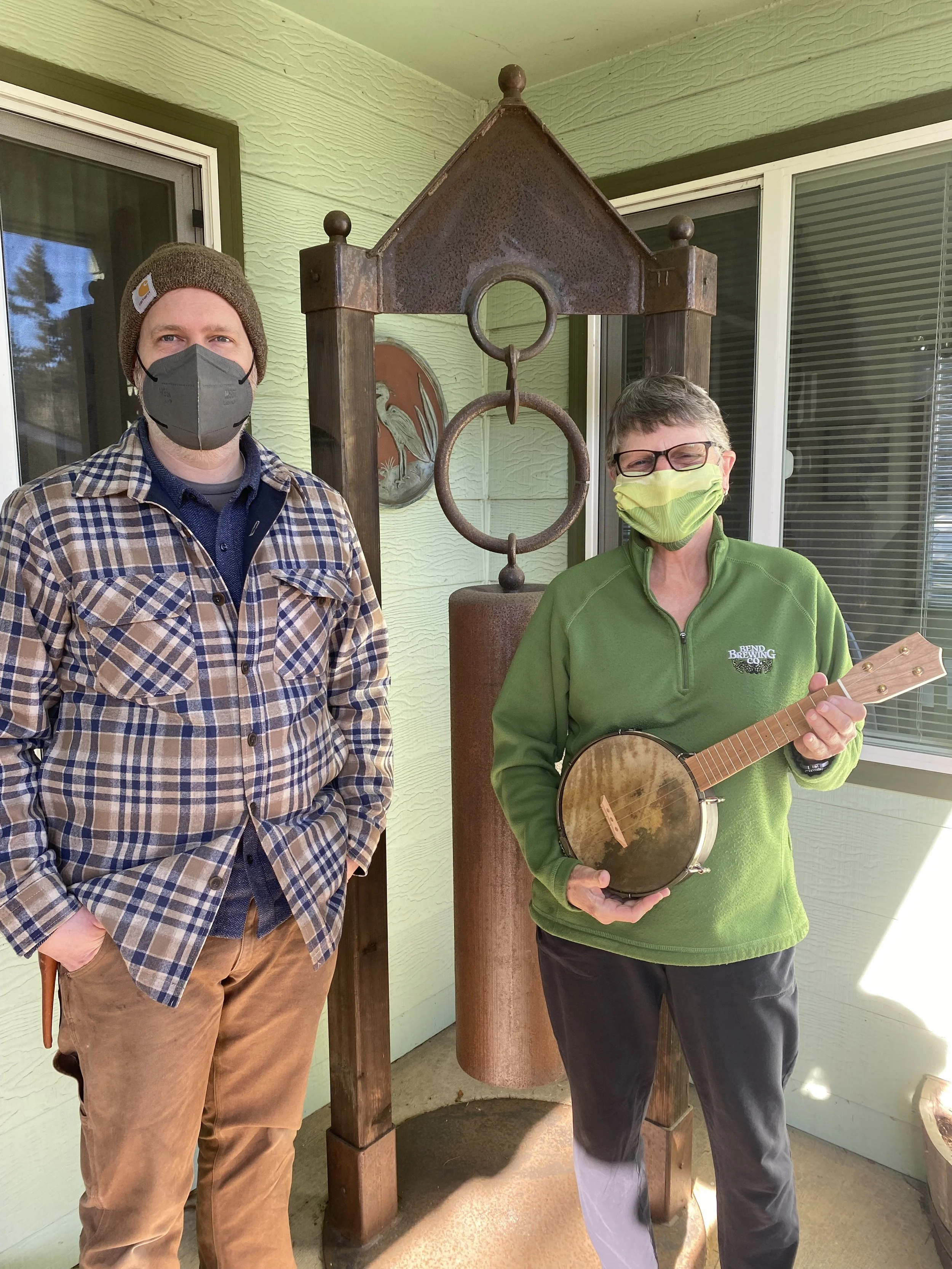This project started when our customer sent us a walnut board- salvaged from a stereo cabinet her late father built in high school shop class. The wood turned out be enough for two ukuleles, including the fretboard and headplate. I paired it with a salvaged wall panel Cedar top and a Mahogany neck from a cabinet maker’s scrap bin. It is loud, sweet and very light weight, I am quite pleased with it. The maple binding and walnut pickguard protect the top and add some visual interest to the design. Thanks to Jennifer for her long term support of Beansprout!
“Hello Nicole and Aaron,
I just wanted to let you know that my tenor ukulele and cheese board arrived safe and sound yesterday. You really outdid yourselves with this ukulele! Based on all my other Beansprout ukuleles, I knew it would look, feel, and sound amazing, but this really is wonderful. It is so light and resonant, and the tone is fantastic. It also looks spectacular, of course. It truly exceeds my expectations in every way.
Thank you for turning this walnut from a broken piece of furniture into something beautiful and useful! My dad would have been thrilled with your craftsmanship and that you were able to transform wood that he selected so many years ago for his first big high school shop project into an entirely different sort of project for me. I shared the photos you sent of this ukulele in progress with my mom and sister and they enjoyed following along and anticipating its completion and arrival almost as much as me. It really means a lot to all of us that you were willing to take on this project and transform these boards into objects that we can use and treasure. Thank you!
- J.L. ”




































